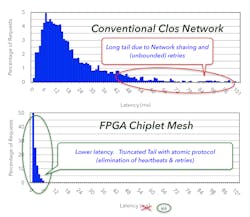Distributed System Solution Inspired by Quantum Information Theory
This video is part of the TechXchange: Basic Quantum Computing.
What you’ll learn
- Who is Daedaelus?
- What problem is the company trying to solve?
- What does quantum information theory have to do with this?
Distributed systems are the norm these days, and you might think that all of the problems associated with this approach have been solved or at least addressed. Timing and synchronization are part of a distributed systems’ nature and synchronization problems can result in lost data, reduced communication speed, and much more.
Protocols like TCP are designed to provide reliable communication at a network level. Shared memory systems are built to do this at the chip level. And application protocols address this issue at the application level, such as database synchronization.
I spoke with Daedaelus’ CEO and founder, Paul Borrill, about the company's ideas and approach to the topic (see the video above).
The initial project targeted by Daedaelus is network communications. The implementation uses an FPGA-based mesh network using conventional network interfaces (see figure). The difference between the results is significant. The video covers more about how quantum information theory makes this possible.
You can also check out Daedaelus’ Interconnect Wizard Steve Chalmers' blog on Robust Communication for Distributed Applications. It ends with this list of technical principles “which will be counterintuitive to many in the industry:”
- Timeouts, although ubiquitous in computing today, do not work in the general case. Actions and responses through alternate paths should be used instead.
- Time stamps only work as well as clock synchronization, which is always an approximation. Kudos to Google for approaching the asymptote here.
- When the goal is robustness (absolute accuracy), only the order of events at each given observer can be relied upon.
- Events should occur at first opportunity, not sit in queues.
- If more bandwidth than 1/latency is needed, explicitly make events parallel.
Check out more videos/articles in the TechXchange: Basic Quantum Computing.
About the Author
William G. Wong
Senior Content Director - Electronic Design and Microwaves & RF
I am Editor of Electronic Design focusing on embedded, software, and systems. As Senior Content Director, I also manage Microwaves & RF and I work with a great team of editors to provide engineers, programmers, developers and technical managers with interesting and useful articles and videos on a regular basis. Check out our free newsletters to see the latest content.
You can send press releases for new products for possible coverage on the website. I am also interested in receiving contributed articles for publishing on our website. Use our template and send to me along with a signed release form.
Check out my blog, AltEmbedded on Electronic Design, as well as his latest articles on this site that are listed below.
You can visit my social media via these links:
- AltEmbedded on Electronic Design
- Bill Wong on Facebook
- @AltEmbedded on Twitter
- Bill Wong on LinkedIn
I earned a Bachelor of Electrical Engineering at the Georgia Institute of Technology and a Masters in Computer Science from Rutgers University. I still do a bit of programming using everything from C and C++ to Rust and Ada/SPARK. I do a bit of PHP programming for Drupal websites. I have posted a few Drupal modules.
I still get a hand on software and electronic hardware. Some of this can be found on our Kit Close-Up video series. You can also see me on many of our TechXchange Talk videos. I am interested in a range of projects from robotics to artificial intelligence.

